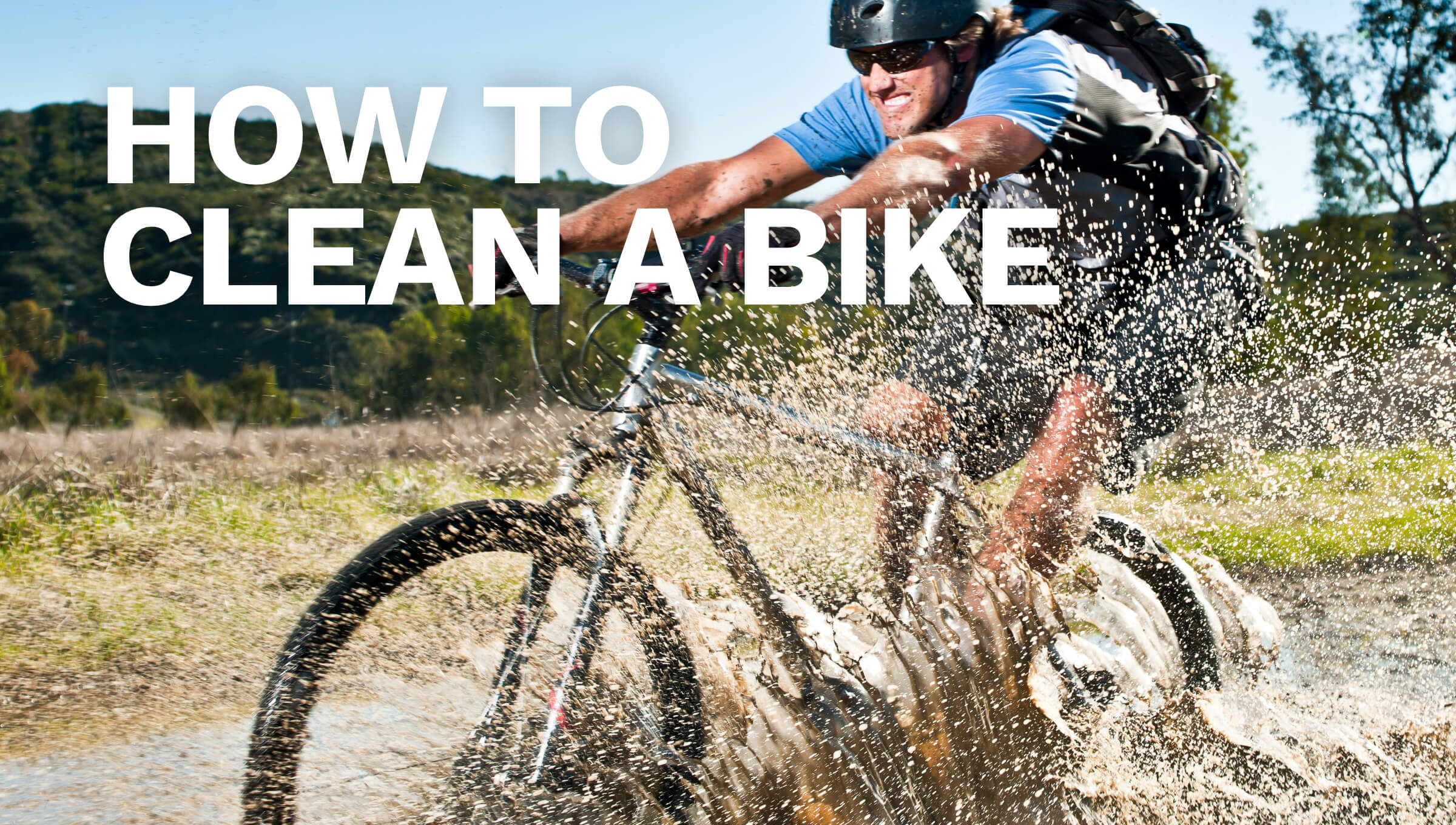
How to Clean a Bike
Your bike is inevitably going to get dirty, so it's important to clean your bike regularly. Whether or not you have a road bike or mountain bike, you must rid it of grease, grime and dirt off of your bike's parts to ensure it runs smoothly and lasts the distance.
Cleaning your bike is easier than you might think, and doesn't take long at all.
Follow our step-by-step guide on how to clean your bike.
This guide will cover the following steps:
- What You Need
- Prepare to Clean
- Apply Degreaser
- Wipe Down the Bike Frame
- Scrub the Chain
- Clean the Rim
- Rinse
- Apply Lubricant
- How to clean rust off a bike
- Our top tips
What You Need:
- Two buckets with water
- Bike cleaning product
- Bike degreaser
- Cloths & sponges
- Soft bristle brushes
- Lubricant
1. Prepare to Clean
Before you begin, make sure you have all of the equipment listed above.
It's best to use hot water and washing-up liquid in your buckets, as this will cut through grease and dirt more easily. Make sure you separate your cloth and sponges too, keeping 'clean' sponges for the bike frame and 'dirty' sponges for greasy sections, such as the chain.
You can purchase a bike cleaning stand, which will make it easier to keep all the moving parts of your bike in check. However, don't worry if you don't have one as you can still achieve a decent clean!
2. Apply Degreaser to the Chain and the Drivetrain
Before you pick up a sponge, you should firstly apply a degreaser to the bike chain and the drivetrain, as this will give it maximum time to work.
Spray or brush the bike chain with a degreaser and turn the cranks backwards to make sure it covers every chain link. You should also apply a degreaser to the cog cassette, using the same motion. Then, apply to the derailleur and leave the degreaser to settle.
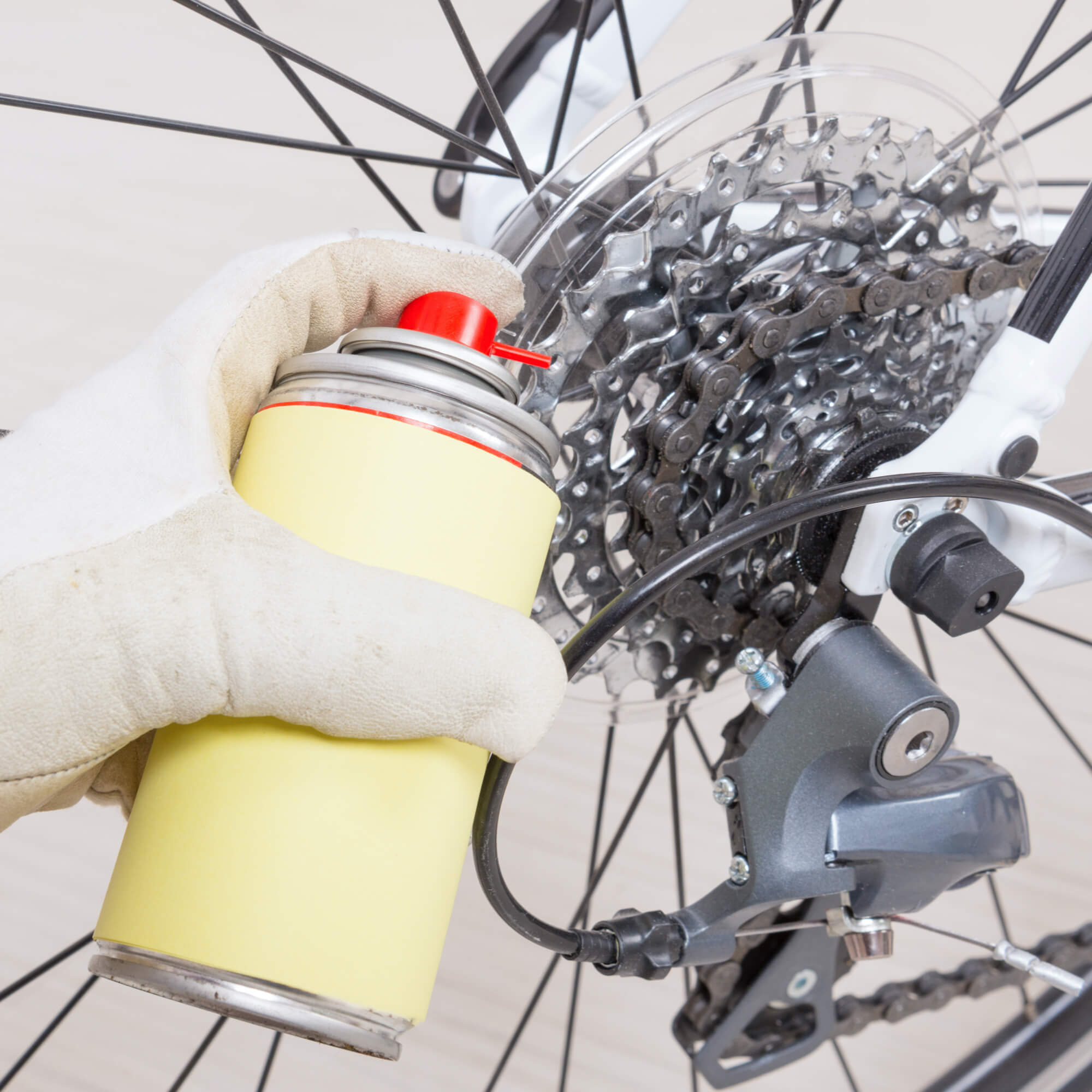
3. Wipe Down the Bike Frame
Some people prefer to use a specified bike cleaning product, however, hot soapy water does the trick.
Wash your bike frame down with a clean sponge, starting at the front of the bike and work backwards and downwards. This should remove any caked-on mud and dirt.
You can dry your bike frame with a cloth, or, leave it to dry in the sun.
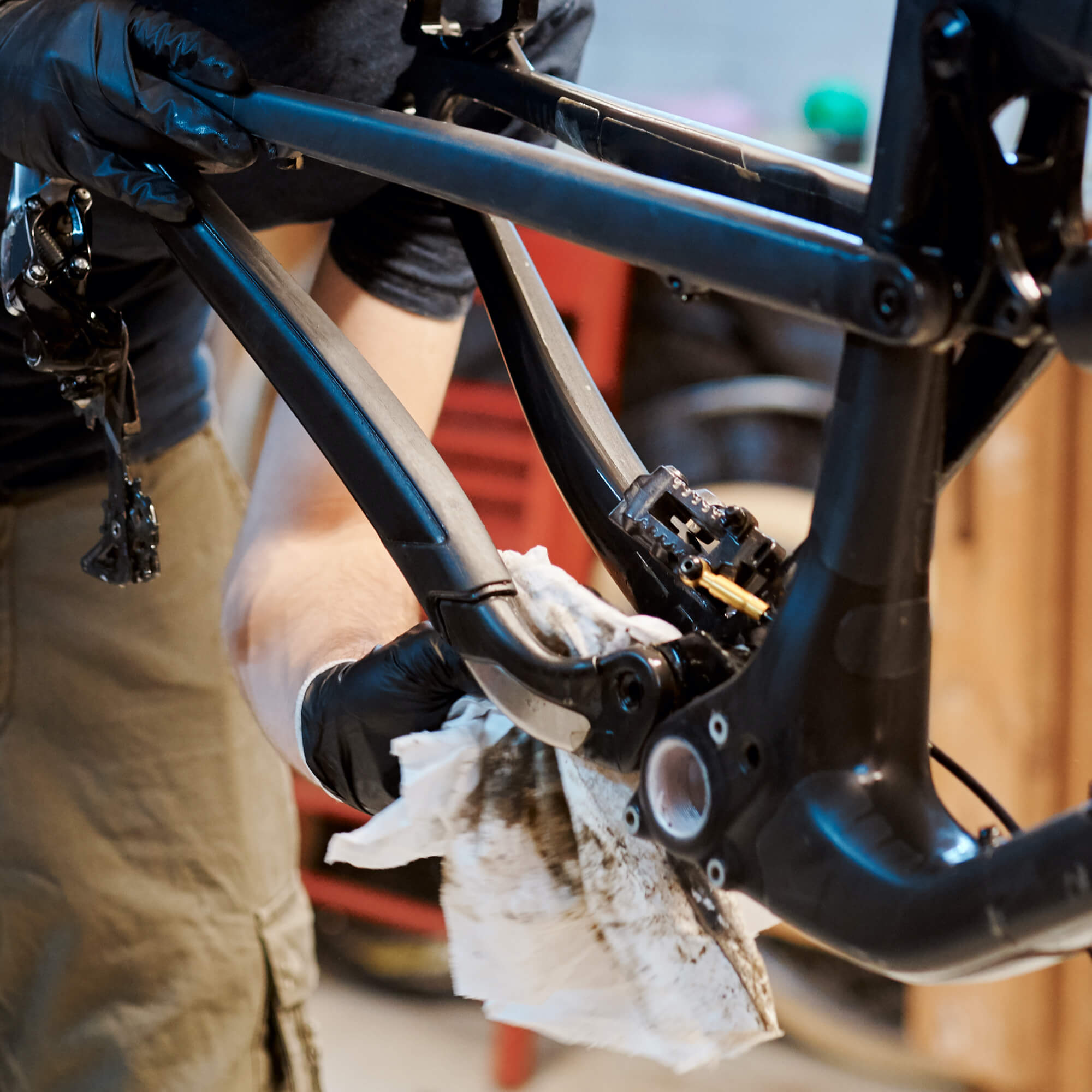
4. Scrub the Chain and the Drivetrain
After cleaning the main bike frame, it's time to revisit the chain and drivetrain. At this point, be mindful of the sponge or cloth you use as it's about to get very greasy! Wipe down the chain whilst slowly turning the pedals and scrub the cog cassette. Regular chain cleaning will ensure that the bike rides smoothly without friction.
Once thoroughly scrubbed, use a clean rag to dry, whilst still turning the pedals. You may need a dry bristle brush to get to the derailleur. Be sure to thoroughly remove the degreaser as this can ruin the effects of the lubricant you apply afterwards.
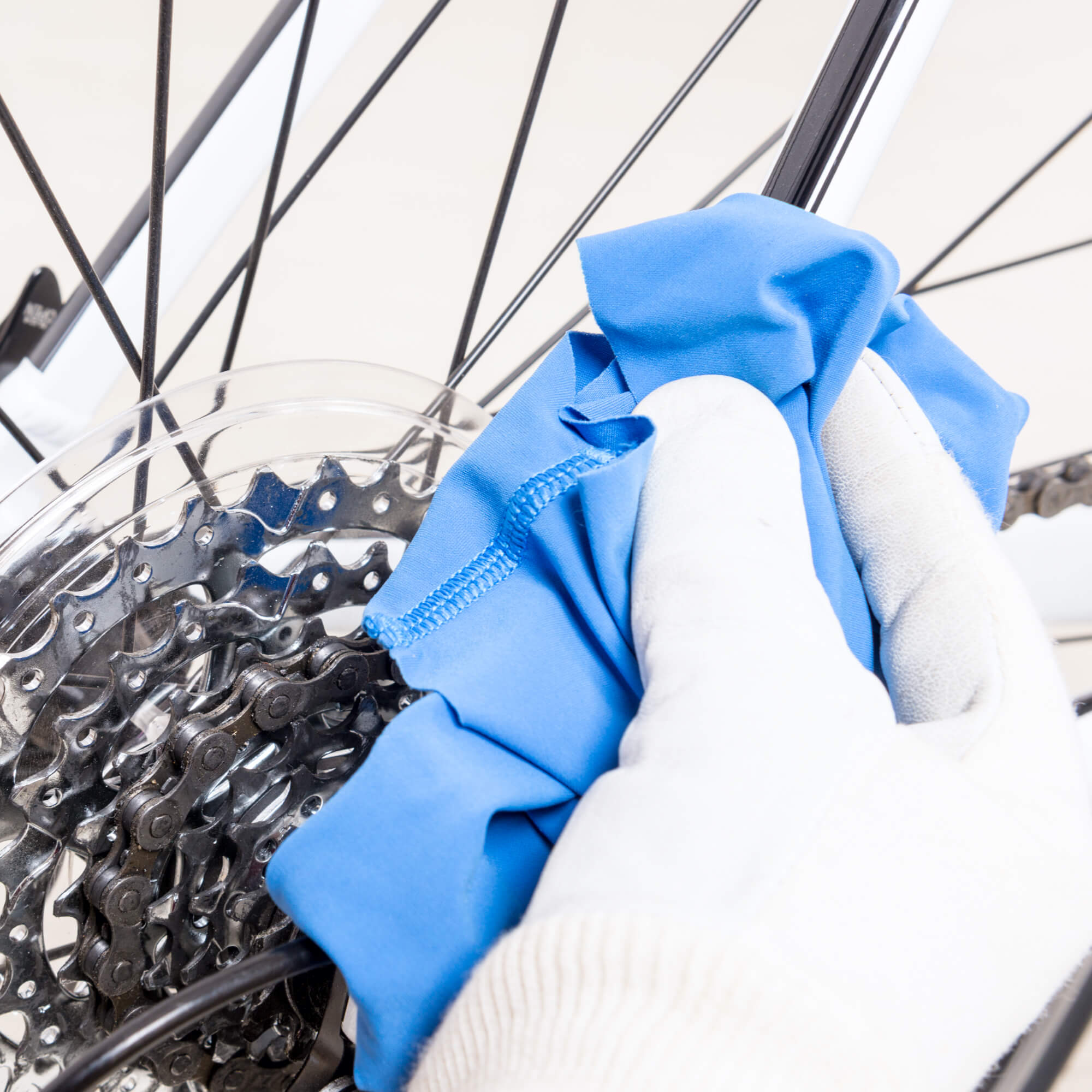
5. Clean the Rim and Wheels
Now it's time to give the wheels of your bike a good clean. To do this properly, it's best to remove the wheels entirely, as this will enable you to scrub down the wheel forks, rim brakes and brake pads. Use hot soapy water to wipe down the bike tyres and rim.
You can purchase a wheel brush for the rim and spokes, but any soft bristle brush will do the job if it can get into those hard to reach places. Don't forget to wipe down your wheel hub with a cloth or sponge. Use the same process for both tyres and reattach the wheels once finished.
If your bike has disc brakes, these will need your attention too. You can buy disc brake cleaner, but if you don't have any to hand, hot soapy water and a sponge is all you need.
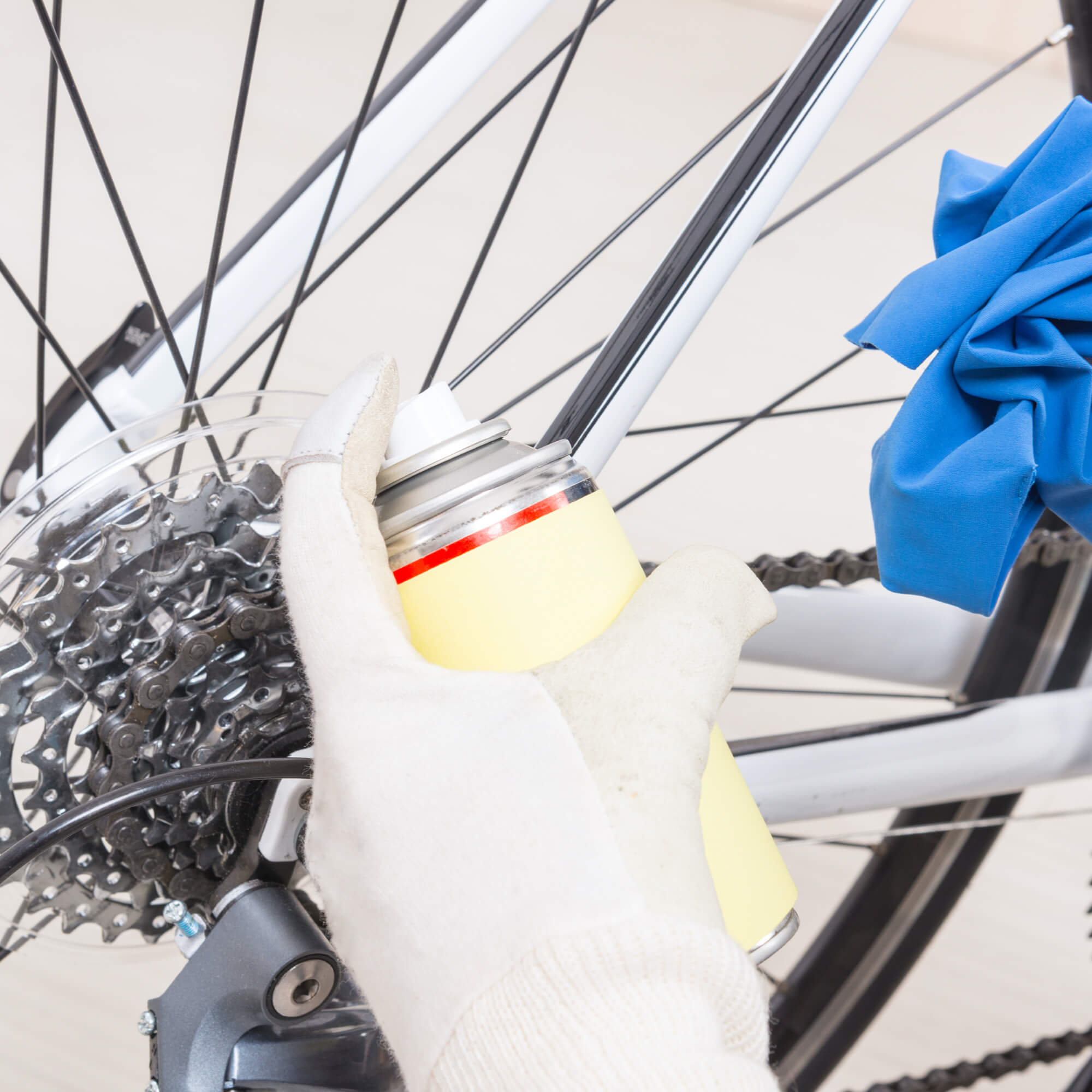
6. Rinse
Now is the time to get rid of the dirty water in your bucket and replace it with clean water. Using water and a clean cloth, give your bike a final rinse. If you have a hose, you can use this instead, however, don't be tempted to use a power washer as this could ruin the paintwork.
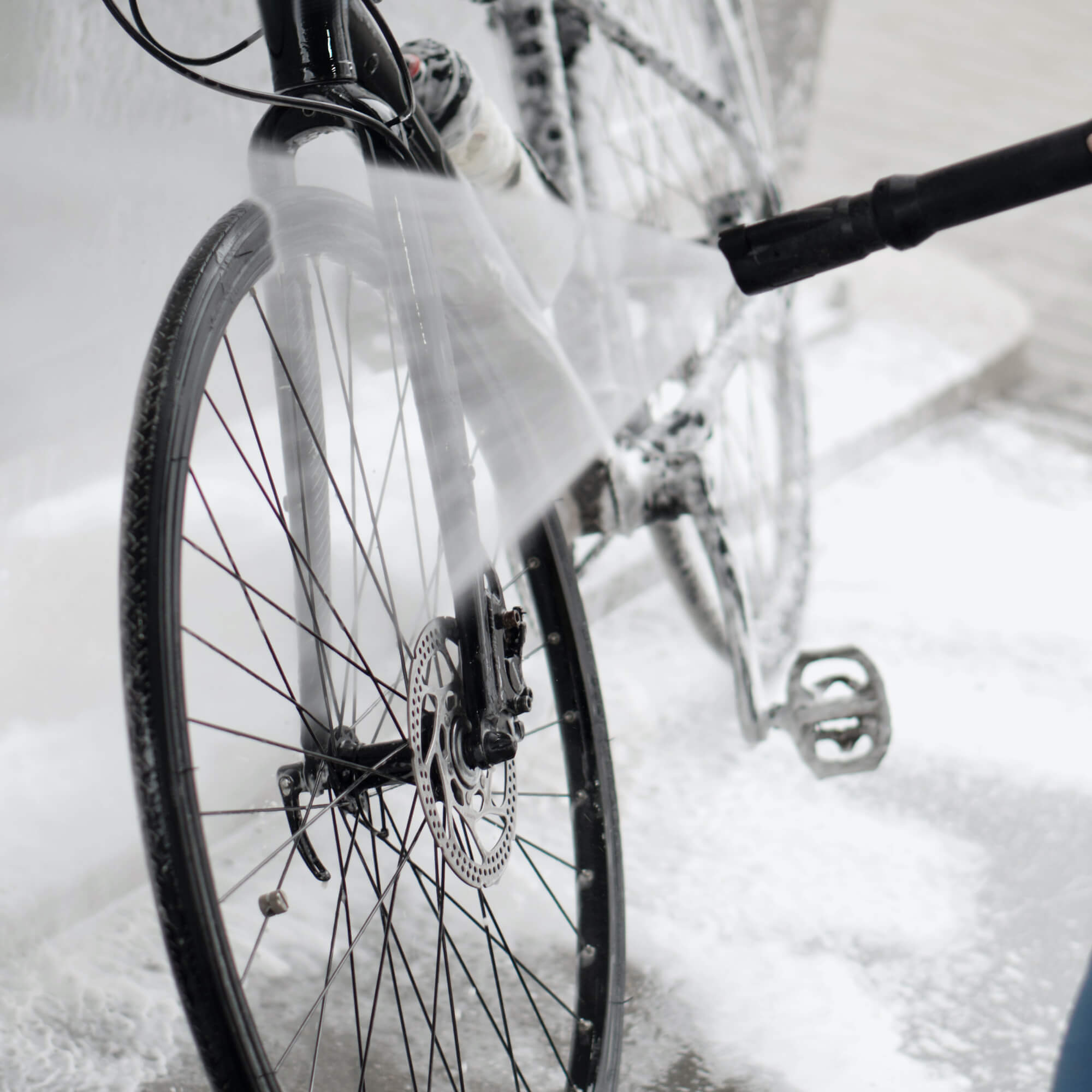
7. Apply Lubricant
Apply lubricant to the bike chain and then run it through a dry cloth while turning the pedals to remove any excess lubricant. To finish, apply a small amount of lubricant to the derailleur and the brake callipers again, removing any excess lube with a dry cloth.
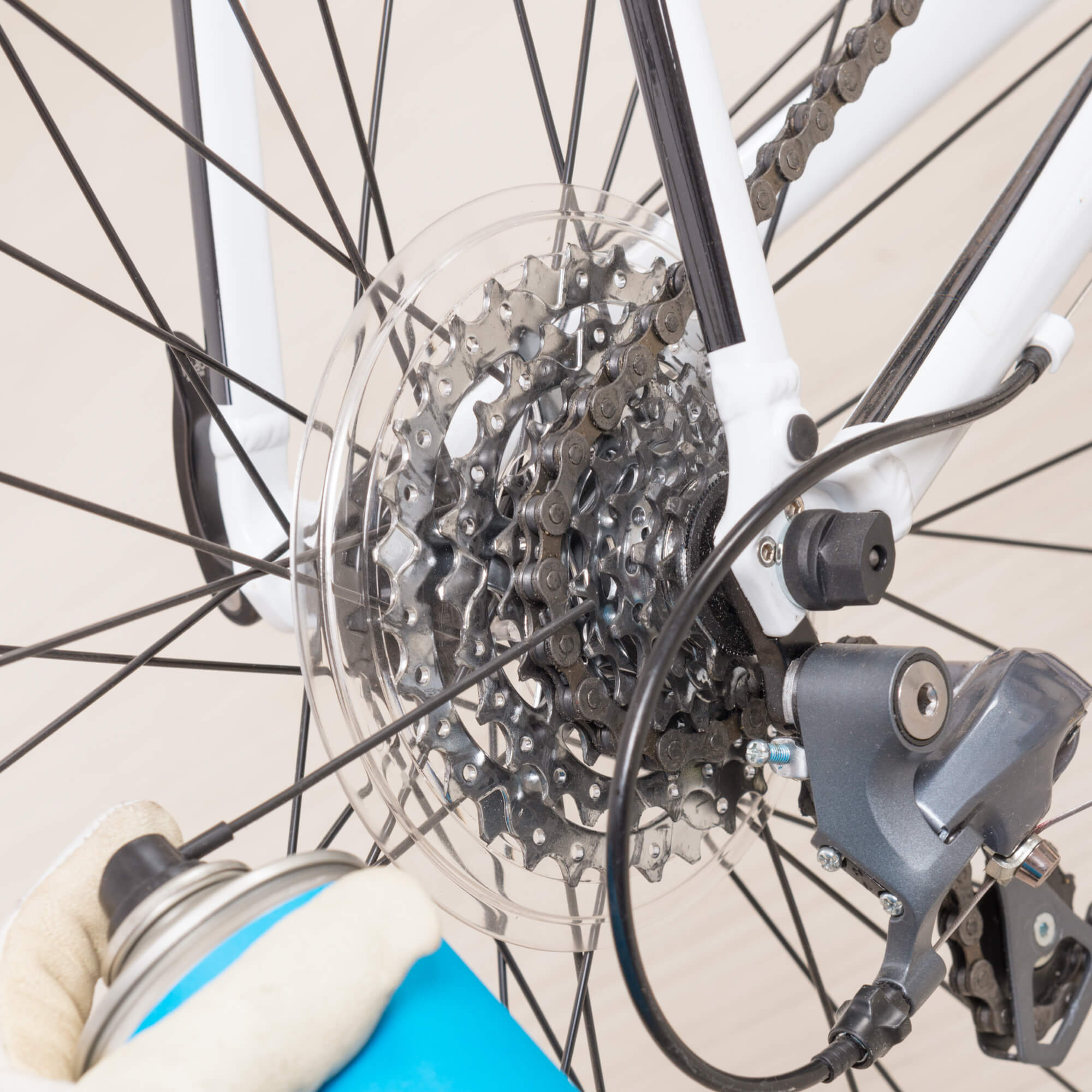
How to clean rust off a bike
Rust can ruin a bike over time, but if your bike is gathering rust it's not too late to get cleaning and bring it back to its former glory.
Start by choosing a well-ventilated area to work and lay down a newspaper to protect the floor. Put on gloves and goggles to protect your hands and eyes from rust and cleaning chemicals.
- Use a wire brush or steel wool to scrub away loose rust from the affected areas. Apply moderate pressure and work in small sections until the surface appears smoother. For stubborn rust spots, use sandpaper to gently sand away the rust until the metal beneath is visible.
- If using a rust remover solution, follow the manufacturer's instructions for application. Alternatively, you can use household items like vinegar or lemon juice. Apply the rust remover to a clean cloth and gently rub it onto the rusted areas. Allow the solution to sit for the recommended time to dissolve the rust.
- After allowing the rust remover to work its magic, use a clean cloth or brush to scrub the rusted areas again. This helps to remove any remaining rust residue. Once satisfied with the results, rinse the bike thoroughly with water to remove any rust remover residue.
- Use clean, dry rags to thoroughly dry the bike, paying special attention to areas where moisture may collect. Once dry, apply a thin layer of oil to any metal surfaces to prevent future rusting and ensure smooth operation of moving parts.
Now your bike parts are clean of rust, take it out for a spin!
Our top tips
- It's recommended that you clean your bike once a month if you use it regularly. Or, every 20-25 rides.
- Be careful not to use a rough sponge or brush on your bike frame as this will ruin the paintwork.
- Don't use a pressure washer as this can ruin your paintwork and loosen the bearings.
- There are different kinds of lubricant but the two most frequently referred to are wet lube and dry lube.
- Dry lube is a lighter substance so therefore attracts less dirt. However, it is less durable, meaning that it can be easily removed in wet weather, removing its benefit. It's a good option in dry conditions.
- Wet lube is more durable and is suited to a wide range of weather conditions and won't wash off in the rain. However, if you opt for wet lube, you'll have to clean the bike chain regularly as it attracts more dirt and grime.
Looking to try out new biking routes a little further away from home? Explore our range of bike racks and embrace a change of scenery.

